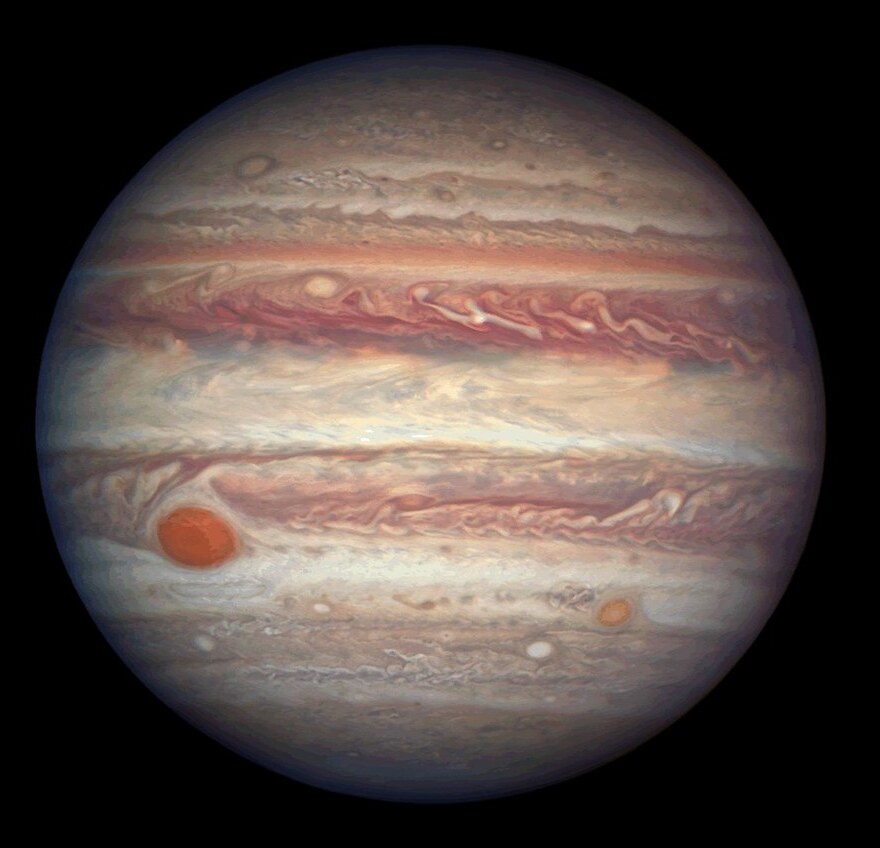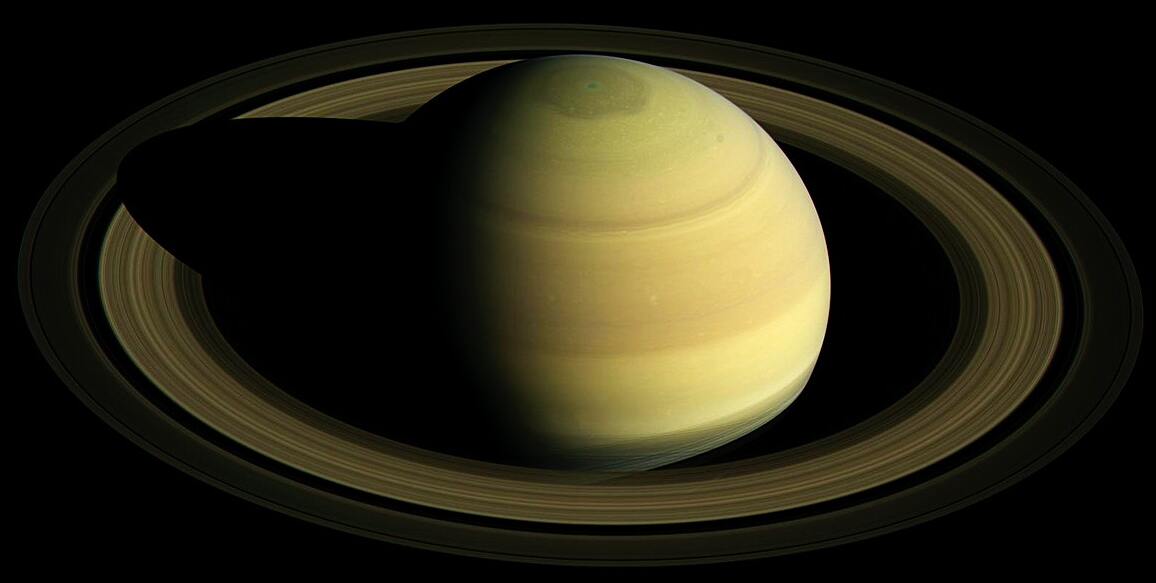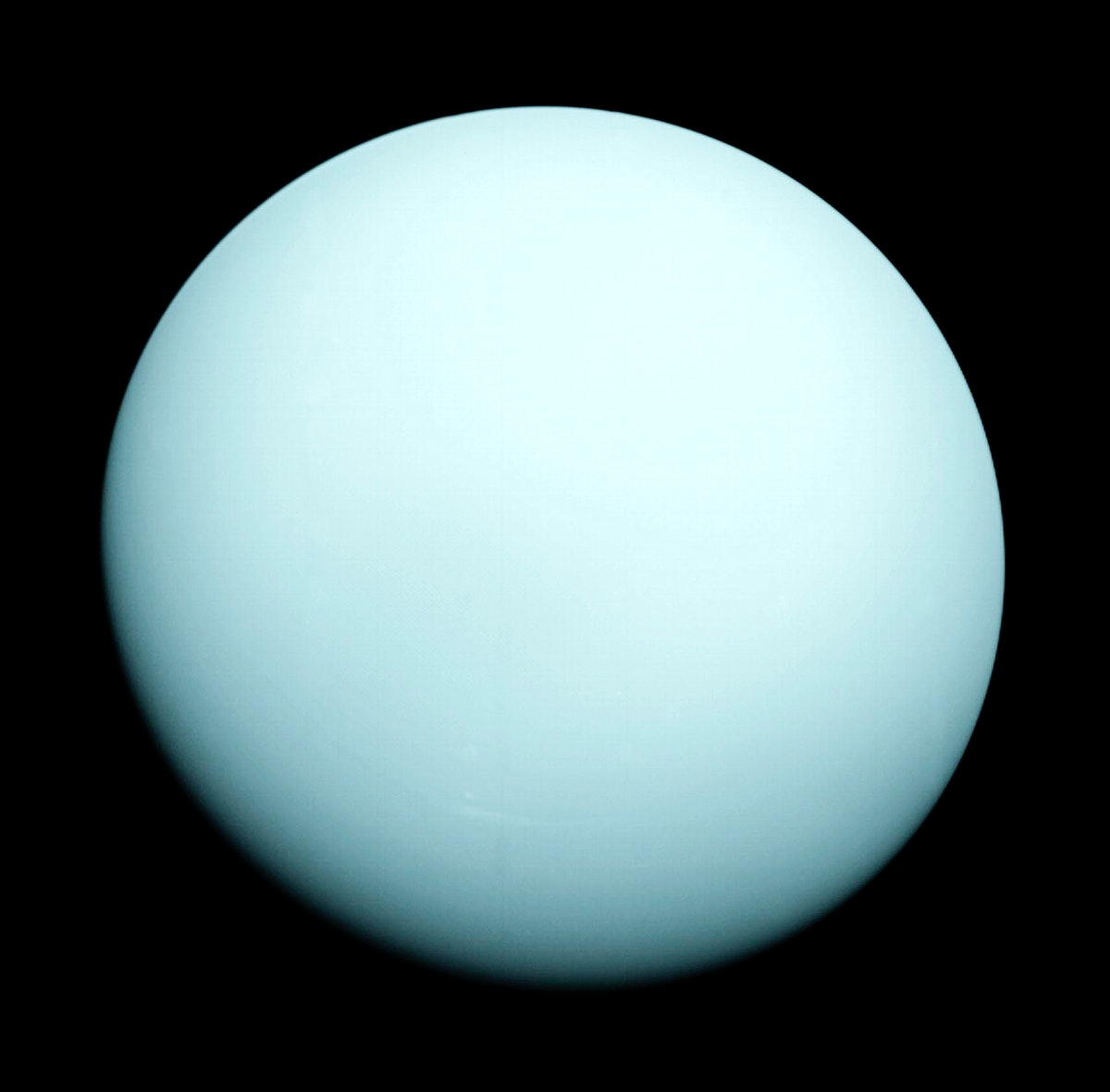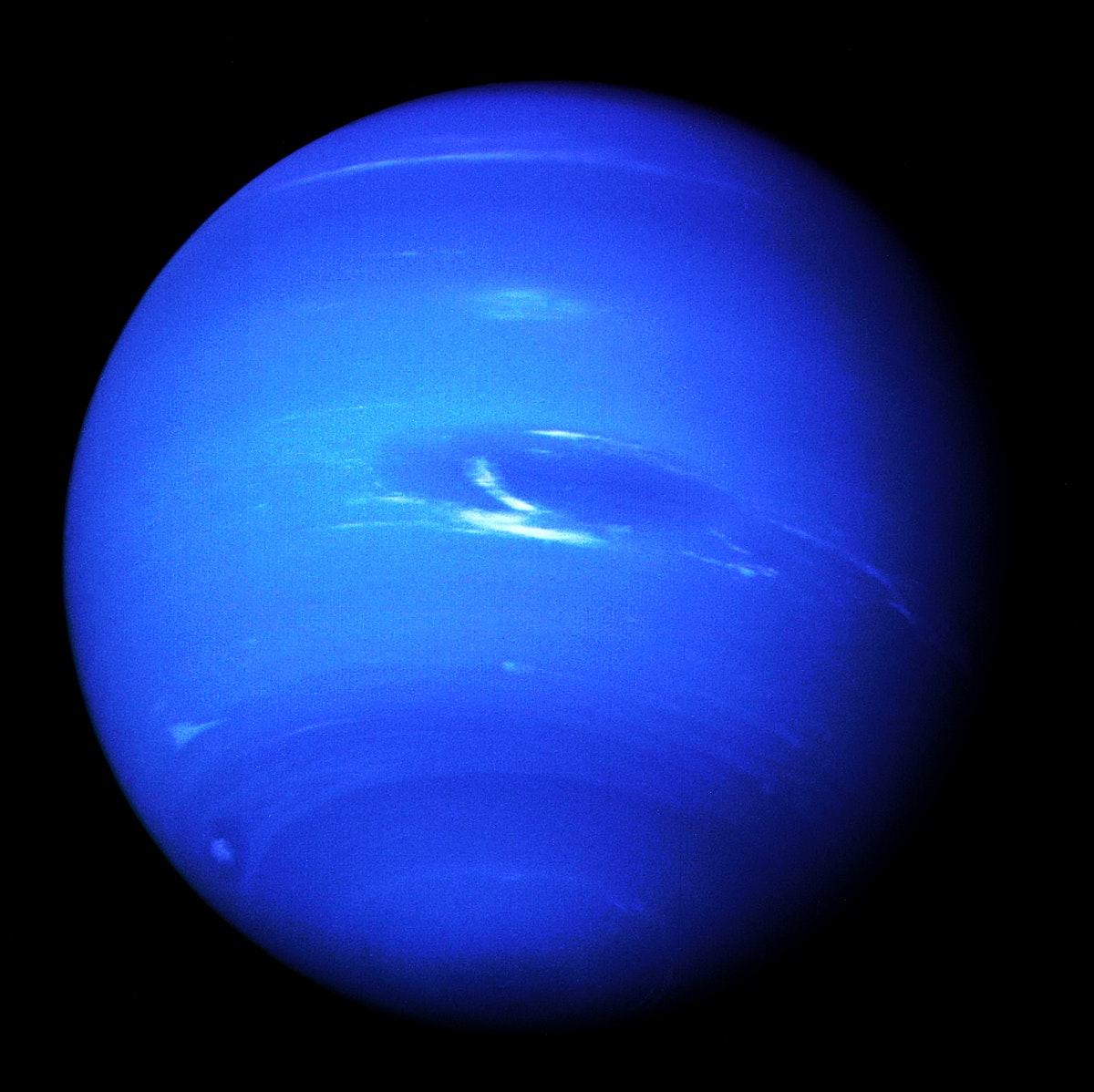The Outer Planets
The outer planets of our solar system are Jupiter, Saturn, Uranus and Neptune. These four large planets, also called jovian planets reside in the outer part of the solar system past the orbits of Mars and the asteroid belt. The outer planets are basically the opposite of the inner planets: These planets have no solid surface, are much larger, and are essentially balls of gas composed of hydrogen and helium.
Jupiter

- The fifth and largest Planet in the solar system is Jupiter. The massive planet has an impressive diameter of 139,822 km (86,881 mi). To put this in perspective, it would take 11 Earths lined up next to each other to stretch from one side of Jupiter to the other and it would take 317 Earths to equal the mass of Jupiter.
- Due to its enormous size Jupiter was named after the Roman king of the gods. The first recorded sighting of Jupiter in 1610 by Galileo Galilei.
- Jupiter has the shortest day of all the planets in the solar system, it lasts about 9 hours and 55 minutes. Jupiter has a short day but has a long year which last for 11.86 Earth years. And due to Jupiter's axis having 3.13 degrees of a tilt, the planet does not experience seasons. Jupiter is around 472.72 million mi (760.77 km) away from the sun.
- After the asteroid belt Jupiter is the first gas giant. So what is a gas giant? It's basically a planet mainly composed of hydrogen and helium. This means that Jupiter has no solid surface. So if a drone were to fly into Jupiter would it come out the other side unscathed? No, because there is atmospheric pressure that would crush the probe, not only that, the gas is very dense.
- Jupiter's most recognizable feature is its Great Red Spot. The Great Red Spot is actually a storm with crimson-colored clouds in Jupiter's southern hemisphere. This vast storm has been raging for over 300 years. The storms in this spot are stronger than any storm on Earth, and winds can reach up to 300 miles per hour. So what causes the big red spot? Jupiter's atmosphere is made up of hot gases that are constantly swirling and when they merge they create intense storms. Astronomers believe that these storms piled up on each other and formed the Great Red Spot. This spot is huge; three earths would fit inside of it.
- Jupiter is gigantic which is why it has a strong gravitational pull that keeps its 79 known moons in orbit around it. Scientists know of only 79 moons but there could be more orbiting the planet. Jupiter's magnetic field is around 14 times stronger than Earth's.
- Even though Jupiter has 79 confirmed moons only 4 main moons that were discovered by Galileo Galilei, in 1610, are worth any attention:
- Io - Io is the innermost of the Galilean moons to orbit Jupiter. Most wouldn't know this but Io is the most vocanically active body in the solar system. The moon can spew out plumes of sulpher as high as 300 km (190 miles) into the air. Io's surface is dotted with lava lakes and floodplains of liquid rock. So why is Io so hot? The most reasonable answer is tidal forces. Due to Jupiter's strong gravitational pull, Io makes a full orbit in just 1.76 days. Since Io is so fast heat is caused through friction, therefore causing Io to stay hot.
- Europa - Another moon discovered by Galileo was Europa. The reason why scientists are so interested in Europa is because they believe that the moon has the potential to support life. How can a moon so far away from the sun have the possibility of extraterrestrial life? Europa has high reflectivity which gives the surface of the moon the appearance of ice. However under the crust scientists believe that there is oceans of water, that could support marine-life.
- Ganymede - The largest moon in the entire solar system. Ganymede is larger than the planet Mercury and due to its size, it's the only moon with its own magnetic field. Just like Europa scientists think that Ganymede also has the possibility of a salty ocean underneath its icy surface. Scientists are planning a mission that will arrive on Ganymede in 2030 to observe the moon.
- Callisto - The fourth and farthest of the Galilean moons is Callisto. Due to having a very thin atmosphere Callisto is the most heavily cratered object in the solar system. However, other then craters the moon's landscape has remained unchnged since the formation of the moon. Due to the cratered surface scientists believe that there is not much life on the surface, however, similar to Ganymede and Europa scientists think that there is an underground ocean that could support life.
Saturn

- The sixth and as some would say, the most beautiful planet, is Saturn. Jupiter and Saturn have almost the same atmospheric composition which is why Saturn is named after the Roman god Saturnus, the father of Jupiter.
- Saturn is the second largest planet in the solar system and just like Jupiter, Saturn is a gas giant, made up of mainly hydrogen and helium. Due to this Saturn is the least dense planet in the solar system. Similiar to Jupiter, Saturn has very strong winds that reach up to 1,118 miles per hour. Although Saturn is a gas giant, scientists believe that the planet has a solid rocky core.
- Due to having three layers of clouds containg ammonia ice, temperatures range from -280°F (-173°C) to -170°F (113°C). The ammonia ice is also the cause for Saturn's pale yellow color. Even though the upper layers of clouds are very cold, Saturn's core is tremendously hot, reaching temperatures of up to 21,000°F (11,700°C). This is surprising because Saturn is 886 million miles (1.4 billion kilometers) away from the sun.
- Saturn has short days but long years, a common trend of farther planets. Saturn takes about 10.7 hours to rotate on its axis once, however it takes 29 Earth years to orbit the sun.
- Saturn is the second largest planet in the solar system; nine Earths side by side would almost span Saturn’s diameter, and Saturn is 95 times Earth's mass. Even though Saturn is not as big as Jupiter, it has more moons than Jupiter: Saturn has 53 known moons with an additional 29 moons awaiting confirmation of their discovery, which is a total of 82 moons.
- Saturn's first discovered moon was Titan. This was Saturn's most major moon because scientists belived that it could host life. Titan is Saturn's largest moon and the second largest moon in the solar system; slightly larger than Mercury. Titan also has the most significant atmosphere of any other moon in the solar system. With the exception of Earth, Titan is the only world that has lakes, rivers, and seas of liquid on its surface. Due to these traits scientists think that Titan could potentially support life.
- Saturn's most obivous trait is its beautiful rings. Saturn has the most extensive ring system in the entire solar system made up of seven rings. Saturn's largest rings span 7,000 times the diameter of the planet, but can be only 30 feet (9 meters) thick. Saturn's ring are composed of billions of particles of ice and rock. These particles can be the size of a baseball or a house. All this debris is belived to be the leftovers of asteroids, comets, and shattered moons.
Uranus

- The seventh planet in the solar system, and maybe the weirdest is Uranus.
- The planet Uranus is named after the primordial sky god, Ouranus who is the father of Saturn and the grandfather of Jupiter.
- Uranus is the first planet that has been discovered with the aid of a telescope. It was discovered by William Herschel in 1781. The planet was too far away and too dim to be discovered by ancient civilizations.
- Uranus is an ice giant unlike Saturn and Jupiter, who are gas giants. Uranus's atmosphere is still mostly made up of hydrogen, helium, and some amounts of methane like Jupiter and Saturn however Uranus's interior is different. Uranus's interior consists of oxygen, nitrogen, carbon, and sulfur. It also consists of an icy mantle and rocky/iron core.
- Due to being 1.8 billion miles (2.9 billion kilometers) away from the sun, Uranus is very cold; its coldest temperatures can be about -371°F. Uranus can reach the coldest temperatures in the entire solar system. Uranus's winds speeds can reach up to 560 miles per hour (900 kilometers per hour).
- Uranus takes about 17 hours to rotate once and about 84 Earth years to complete an orbit around the Sun. Similar to Venus, Uranus rotates in a direction opposite to the other six planets.
- The strangest thing about the planet is that scientists believe that long ago an object the size of Earth collided with Uranus and caused the planet to tilt sideways. This tilt causes Uranus to have the most extreme seasons in the solar system: The planet's north pole experiences 21 years of nighttime in winter, 21 years of daytime in summer and 42 years of day and night in the spring and fall. Uranus's harsh conditions are the reason behind why there is no life on the planet.
- It might be hard to notice from the image, but Uranus has 13 known rings that are very thin and very faint. Only a few kilometers wide, Uranus's rings are made up of ice, dust, and the remnants of a moon shattered by an asteroid or comet.
- Uranus is a pretty big planet; it is about four times wider than Earth. If Earth were a large apple, Uranus would be the size of a basketball. With this in mind, Uranus is the second least dense planet in the solar system, after Saturn.
- Even though Uranus is not as big as Saturn or Jupiter, the planet still has an impressive 27 moons orbiting it. Scientists think that the collison between Uranus and the Earth-sized object so many years ago may have formed Uranus's moons.
Neptune

Sources
(To learn more you can click on them)



